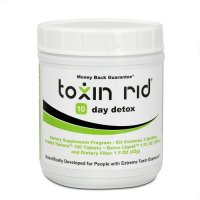Best Soil for Growing Cannabis Indoors and Outdoors
| Pros & Cons of Growing Cannabis in Soil | |
| Pros | Cons |
| Soil is easier than hydroponics. Hydroponics will require a level of expertise your average grower will not have as a beginner. | Hydroponics can produce greater yields. It may be well worth learning. |
| You can precisely determine the nutrients in your fertilizer mix or buy a premade mix. | Overdoing your fertilization can ruin your plants. Auto-flowering, short-season strains need less fertilization. Photoperiodic strains may take much longer to grow but may have a higher yield and require extra nutrients from fertilizers. |
| Different soils bequeath different properties to your cannabis, giving it a local flavor. | Some soils lack the necessary nutrients to produce healthy and bountiful plants, or may be unable to properly hold water, oxygen, and CO2. |
| Growing directly in the ground can result in a plant with more resilient properties as the plant interacts with the challenges of wind, weather, and other natural stimulators. | Outside growing in soil can expose you to unwanted scrutiny by neighbors, authorities, or even hungry insects. |
| It’s easier to grow outside with soil. | You need to be in a region within 35 degrees of the equator to really get proper sunlight for your hungry adult plants. |
Best Soil For Growing Cannabis Indoors

Photo of a male Marijuana plant in flowering stage. This is a Cannabis sativa × Cannabis indica hybrid called “Super Silver Haze”. by Rikva / Public domain
Key features of the best soil for cannabis, important considerations
For the best, biggest, organic, and juiciest pot bud to progress to flowering, you want the best soil mix for cannabis indoors.
Considerations for Autoflowering versus Photoperiodic Marijuana Strains
A first consideration is the strain of marijuana you want to use. First decide if you want to use an auto-flowering strain versus a photoperiodic strain. Photoperiodic strains must be induced to flower with a 12/12 dark/light schedule, and can produce infinitely cloneable cuttings or seeds, higher yield, and stronger level of weed potency. Photoperiodic strains will take at least 4 months to be ready to flower. Autoflowering strains can flower sooner but may produce lighter yields and be unsuitable for techniques like topping to produce more bud. Other concerns when choosing the strains you may be potting indoors is the level of CBD, THC, and other cannabinoids and terpenes you want. You can review data on over a hundred top strains on our site here: https://leaf.expert/strain
For autoflowering strains and other strains which will be expected to produce a quick yield, you don’t want a complicated soil recipe. You want a to use a soil based on peat, mixed with half parts of coco coir. Coco coir is a well oxygenated, easy draining coconut fiber mix that provides air and drainage to your mix of peat soil. Coco coir has the natural PH you want in your soil as well, about six to seven. You might mix it with about thirty percent perlite to help provide drainage. A replacement for Coco coir maybe cottonseed meal. If you don’t want to use perlite, you can use vermiculite. The point is to use a fiber which can hold and release oxygen, water, and nutrients without becoming water-logged or rotten. Your grainy rocks like vermiculite and perlite absorb and regulate water content in the soil.
Peat Soil Fields



Figure 1. Rich peat soil. Peat soil can be your main soil for growing your weed. Image: Peat exploitation in the nature conservation area (!) of “Ewiges Meer” (“Eternal lake”), a big moor lake in East Frisia, NW Germany. by Christian Fischer / CC-BY-SA-3.0
Coco Noir


Figure 2. Coco Coir fibers being produced from coconuts. These hardy fibers can provide excellent oxygenation, water regulation, and nutrient delivery for your marijuana plants when added to the soil. Image: Photograph taken by author sanhjaa in March, 2002 by Public domain



Figure 3. Perlite volcanic rock used for drainage when added to the soil mixture to grow your marijuana plants. You can see the standard size of the grains used in horticulture in this image.
Now you know what your ingredients look like. You can get these at your local gardening centers or research the online deals from popular advertisers. Your mixture of 50 percent rich peat soil with a PH of 6 to 7, then 50 percent coconut coir and perlite will perfectly maintain your water content, air content, and correct acidity for your plants. Your soil for your autoflowering strains does not need to be fertilized. Fertilized soil is best for highly experienced users who have cultivated a fertilized soil mix for many years for their photoperiodic strains which will have a longer growing time and produce more yield.
Indoors, you will need to use containers to hold your soil. You can start your plants in 6-liter pots and move to 5 gallon pots or to fertile ground as your plants mature.
Marijuana Plant Stages



Figure 4.https://www.pinterest.com/pin/create/bookmarklet/?is_video=false&url=https%3A%2F%2Fgrowingmarijuanapro.com%2Fmarijuana-growth-stages%2F&media=https%3A%2F%2Fgrowingmarijuanapro.com%2Fwp-content%2Fuploads%2F2017%2F09%2FMarijuana-grow-stages.png&descriptio
Phase 1: Germination – Half a day to 8 full days.
Your seed is placed between wet paper towels or another wet medium and it roots and sprouts.
Phase 2: Seedling – From one to four weeks.
Your baby weed roots and little leaves come out to find soil and light. The child is vulnerable to moisture and heat, so a light touch is necessary.
Phase 3. Vegetative – Up to two months for plants grown indoors.
The plant is an adolescent and teen and hungry for light and nutrients. This is the feed me stage. Anywhere from eighteen to a full day of light may be required.
Phase 4. Pre-flowing – About two weeks.
Your plants are now getting around 12 hours of dark / 12 hours of light. Over two weeks, they could double in size.
Phase 5. Flowering – Six to twenty-two weeks
For the next few months, your plants will mature and differentiate clearly into male and female, having been induced to flower by a dark / light schedule approaching 12 hours of light / 12 hours of dark.
What is the Best Fertilizer for Marijuana Plants



Figure 5.http://www.ilovegrowingmarijuana.com/wp-content/upload_folders/ilovegrowingmarijuana.com/2014/07/Homemade-fertilizers.jpg
There is no consensus on what is the best fertilizer medium for weed. Different plants have different needs. Beginners may buy a premade recipe like Flower Power or Miracle Grow. Others may use their own mixture of ingredients which they have developed over years of observation for their particular strain and region. The figure above shows typical ingredients in premade mixtures, including cottonseed meal, phosphate, wood ask, limestone, and kelp meal. Popular choices also include bat guano and even compost that you make at home from your own refuse. Some people use vinegar and baking soda to add CO2 to the soil. Perlite, as we have described is also a frequent addition, as well as coconut coir fiber and vermiculite.
Watering Your Soil
You want your soil mixes to be moist but not water-logged. Your watering schedule will depend on the type of plant strain, soil-fertilizer mixture, container, age of the plant, and look of the plant. If your plants are soggy or wilting, you need to check your watering schedule and make sure your soil mix holds and releases water like it should. Ventilation should also be maintained with fan and exhaust so that oxygen and CO2 move as they should and proper humidity is maintained at about 50% humidity. The soil should have dried sufficiently before the next watering to prevent your plant from becoming soggy.
Best Soil for Growing Marijuana Outdoors



selbst fotografiert auf Jamaika Public domain
When you are growing cannabis outside, it grows best within 35 degrees near the equator because it likes a lot of light and warmth. This is why Mexico and Nepal are among the top producers of valued breeds. When you plant your marijuana directly in the soil, you can get many benefits. You get a weed that is tailored to your particular area with a mixture of nutrients which you may find produce superior results by trial and error. This may produce a plant that is unique and the pride of your area. There are a few types of soil you may encounter if you go the route of planting directly in the ground. You will have to determine your soil type and quality and if it is prudent to plant in the ground in your area. Here are a few soil types you may encounter:
Sandy Soils



Sandy soils have loose grains of fine rock like sand. They may be found near coasts or in warmer areas. The benefits of sandy soil are that roots can freely search out nutrients. A con is that it doesn’t hold water very well, and like sand, can get very hot and dry. You may therefore want to add a fertilizer to sandy soil or add mulch for added nutrients and to improve the ability to hold water. You can determine the type of soil you have by taking a sample to a local gardening center or finding out the type of soil common in your region. This is sometimes well known and other times may require a soil scientist. Nearly any region where construction takes place requires a soil scientist to determine the suitability of constructing buildings on the particular type of soil in the region. So, if you are somewhere where buildings are built, you are in the vicinity of a soil scientist.
Phosphorus, nitrogen, and potassium are the basic nutrients you want in your soil. Be cautious of adding them if they are already present in the soil as you could disrupt the natural balance. You can test the PH with a digital tester from a gardening center. You want a reading between five and a half to six PH outdoors.
Silt Soils



Silted lake at Burgwall Jatzke by RonnyKrüger / CC0
Silty soil has a medium grain size and can be very fertile and hold air and water perfectly. The drawback is it can become hardened like clay with too much water and heat. Be sure you plant in a warm area with proper drainage. Plants can thrive with less attention in silty soil.
Loam Soil



Sandy loam by own work / Public domain
Sandy soil, silty soil, and clay soils combine to make loam soil. You can see in the image that it makes soft, moist clumps. This soil handles watering well as well as oxygenation and allowing roots to seek out nutrients. However, it is not as rich as may be needed for your plants and nutrients may need to be added in the faster growing stages of your plants life cycle.
Clay Soils



Siim Sepp, 2005 Quaternary clay in Estonia (400 000 years old).
Clay soil is famed for its ability to hold water, clump, dry and sometimes harden to make vessels, not for being friendly to weed plants. If you encounter this kind of soil, you are going to want to dig wholes as large as a pot you would use for your plant and fill it with your premade fertilizer mix, rather than planting directly in the clay. Essentially, you are having the ground act like a clay pot. Clay holds water well but does not always drain well. You may also decide to use pots outside instead of planting in clay. Just like indoors, 6-liter pots to begin with and 5-gallon pots to finish should be sufficient to allow your plants to flourish and become enriched with therapeutic phytonutrients. You can get premade fertilizer mixes from anywhere from $ 13 USD to around $ 100 USD, depending on what you are looking for. 2.5 Gallons of Flower Power Fertilizer will run you about $98. Now get ready to germinate, meditate, partake, and celebrate!
Bibliography
Image. (n.d.). Retrieved 10 16, 2018, from Wikipedia: The Free Encyclopedia: http://commons.wikimedia.org/wiki/File:Torfabbau-.jpg
Image. (n.d.). Retrieved 10 16, 2018, from Wikipedia: The Free Encyclopedia: http://commons.wikimedia.org/wiki/File:Coir_segregation.jpg
Image. (n.d.). Retrieved 10 16, 2018, from Wikipedia: The Free Encyclopedia: http://commons.wikimedia.org/wiki/File:PerliteUSGOV.jpg
Image. (n.d.). Retrieved 10 17, 2018, from Wikipedia: The Free Encyclopedia: http://commons.wikimedia.org/wiki/File:Gardenofeden.JPG
Image. (n.d.). Retrieved 10 17, 2018, from Wikipedia: The Free Encyclopedia: http://www.4freetextures.com/images/Red-soil764.jpg
Image. (n.d.). Retrieved 10 17, 2018, from Wikipedia: The Free Encyclopedia: http://commons.wikimedia.org/wiki/File:Burgwall_Jatzke3.jpg
Image. (n.d.). Retrieved 10 17, 2018, from Wikipedia: The Free Encyclopedia: http://commons.wikimedia.org/wiki/File:Sandy_loam.JPG
Image. (n.d.). Retrieved 10 17, 2018, from Wikipedia: The Free Encyclopedia: http://commons.wikimedia.org/wiki/File:Clay-ss-2005.jpg
Image. (n.d.). Retrieved 10 17, 2018, from Wikipedia: The Free Encyclopedia: http://commons.wikimedia.org/wiki/File:Flowering_male_marijuana_plant.jpg




